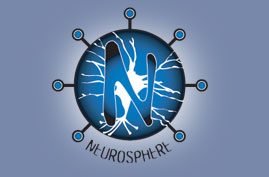Wi-Fi, Public-Private, Half-Full?
Network Infrastructure for the Neurosphere
On the whole, I’d rather be in…Champaign-Urbana?
“Wireless Philadelphia is a project that has been in development for several years, but which will not be finished until late 2006….However, the project has stirred up a hornet’s nest, and has implications for the whole of America…”What is very different about a mesh, versus a cellular network, is that we get the radios very close to where the customer is,” said Chris Rittler of Tropos Networks. “What this does is actually pretty amazing. It enables off-the-shelf devices such as laptops, PDAs and wi-fi phones to connect easily. It also really reduces the requirements on those devices.”
When Dianah Neff announced the project she faced an immediate legal and lobbying onslaught from the giant telecommunications companies, led by Verizon. Verizon lost its fight in Philadelphia but has succeeded in getting the law changed in the rest of the state. Essentially it has become almost impossible for any other community to set up its own wi-fi system.”
http://news.bbc.co.uk/1/hi/programmes/click_online/4491506.stm
“Under the agreements, EarthLink will build, manage and maintain a wireless network over the City’s 135 square miles at no cost to taxpayers. EarthLink will install transmittal devices on approximately 4,000 of the City’s street lamp pole arms for which it will pay the City. In addition, EarthLink will provide City residents and visitors with free hotspots in 22 locations around Philadelphia, and provide the City with 3,000 free or discounted WiFi accounts and 700 discounted T-1 accounts to be used at the City’s option.”
http://ework.phila.gov/philagov/news/prelease.asp?id=233
